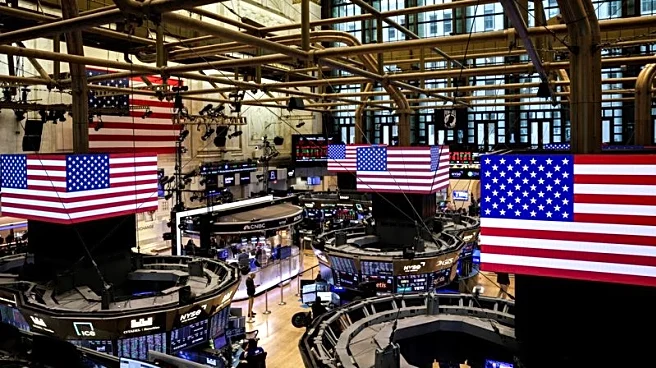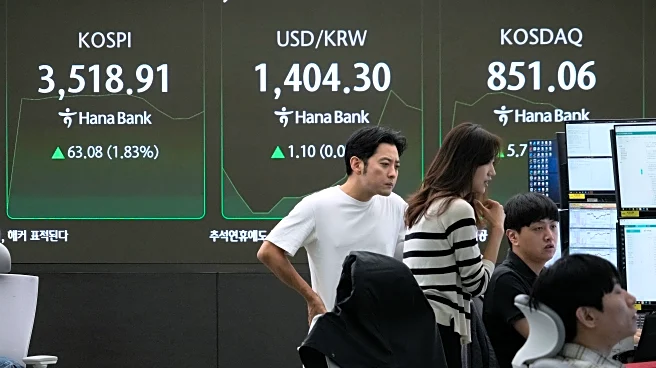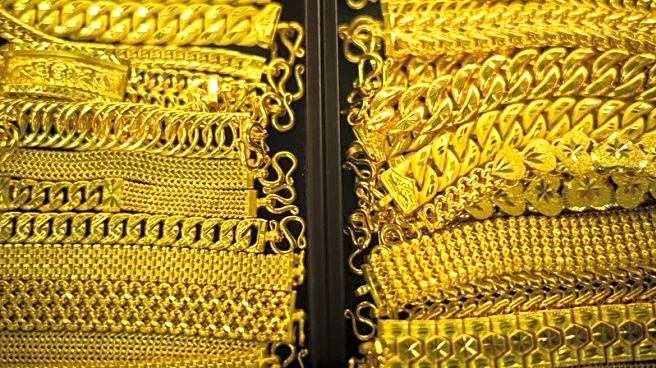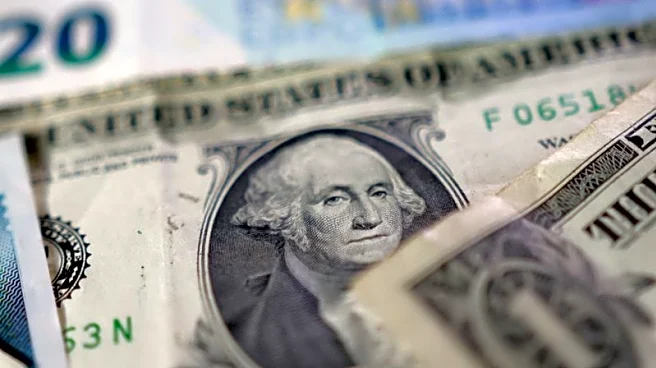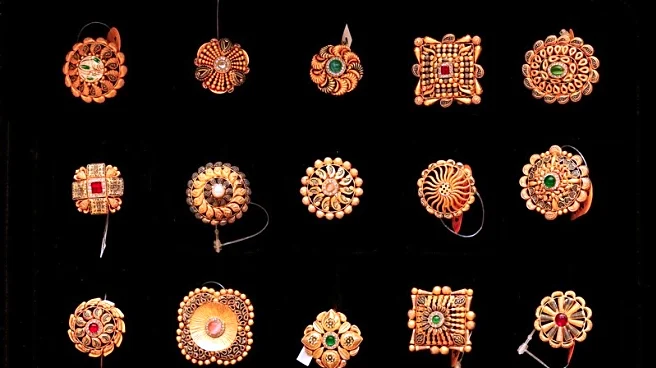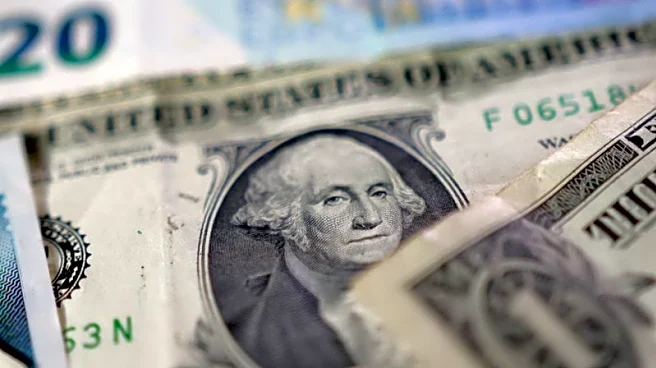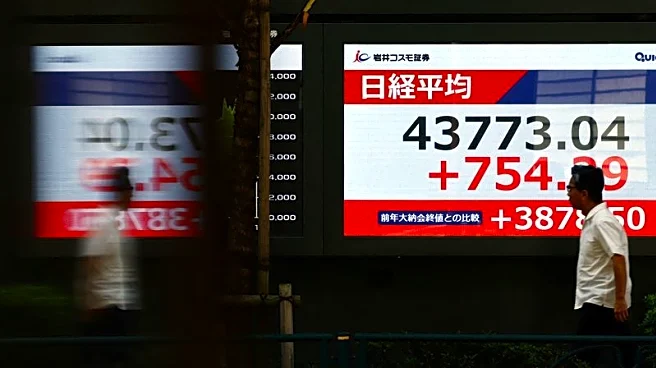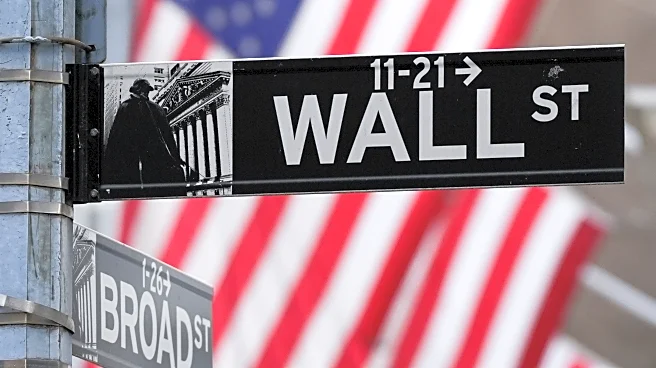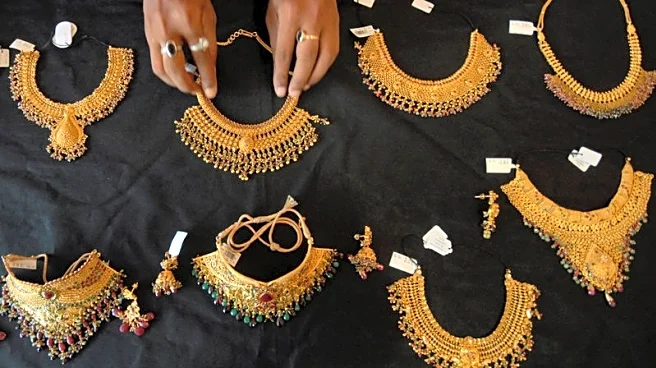What's Happening?
Gold prices have reached a record high of $4080 per ounce, driven by a combination of geopolitical tensions, dovish monetary policies, and a decline in institutional trust globally. This surge marks a significant milestone, as gold crossed the $4000 mark just 200 days after surpassing $3000. The increase in gold prices is attributed to political upheavals in major economies, including the U.S. government shutdown and France's governmental collapse. Additionally, the election of Sanae Takaichi as Japan's first female prime minister contributed to the upward pressure on gold prices. Silver has also seen substantial gains, moving above its long-standing resistance level of $50 per ounce, benefiting from similar market conditions.
Why It's Important?
The rise in gold prices is significant for several reasons. It reflects the growing demand for safe-haven assets amid global uncertainties, including geopolitical risks and economic instability. The increase in gold prices impacts various stakeholders, including investors seeking to hedge against inflation and currency devaluation. Furthermore, the surge in precious metals prices has implications for industries reliant on these materials, potentially affecting production costs and supply chains. The strong performance of gold and silver also highlights shifts in investment strategies, with financial institutions beginning to advocate for increased exposure to precious metals.
What's Next?
Looking ahead, the gold market may experience further volatility as geopolitical tensions continue to evolve. Analysts predict that the next major technical resistance for gold futures is at $4500, while support levels are identified at $3750 and $3500. Silver's market dynamics suggest potential for further price increases, driven by structural supply deficits and rising industrial demand. Investors and financial institutions are likely to continue adjusting their portfolios to include precious metals, potentially leading to sustained interest and investment in this sector.
Beyond the Headlines
The current trends in gold and silver markets may signal broader shifts in global economic strategies, as countries and investors seek stability amid uncertainties. The increased focus on precious metals could lead to long-term changes in investment patterns, with potential implications for global trade and economic policies. Additionally, the technical breakout in silver suggests a significant shift in market dynamics, with potential for further price expansions and increased demand for physical silver.

